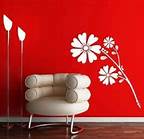By Carole Hyder
There are nine features that a traditional Feng Shui garden should have. A water element is one obvious feature, a fence, a curving path, just to name a few. My gardener husband has made sure that his magnificent expression of flowers and herbs follows those Feng Shui garden directives as closely as possible. Last year, he expanded the path idea by creating an additional one that connects our steep back hill with the rest of the garden. Now we take a few steps up to the mid-point of the hill and can easily and comfortably meander the full width of our yard, giving us a new perspective on our home and our property. (Also, our garden is often the topic of discussion in our Feng Shui classes so it’s important in both my personal life and my professional one!)
Another Feng Shui element is that there should be a “surprise” in the garden. The Feng Shui garden should not tell its whole story on first glance, but rather reveal itself little by little. This means you might tuck a little troll behind a tree, seen only when someone walks up close to the tree. There might be a small chair or bench located under a lilac bush that isn’t noticed until you get to the lilacs. A garden ornament could delight someone unexpectedly when they come around some tall irises.
The prime force behind a Feng Shui garden that relies on these elements is the intention of the garden. What are some possible intentions for a garden? Read more →





















Recent Comments